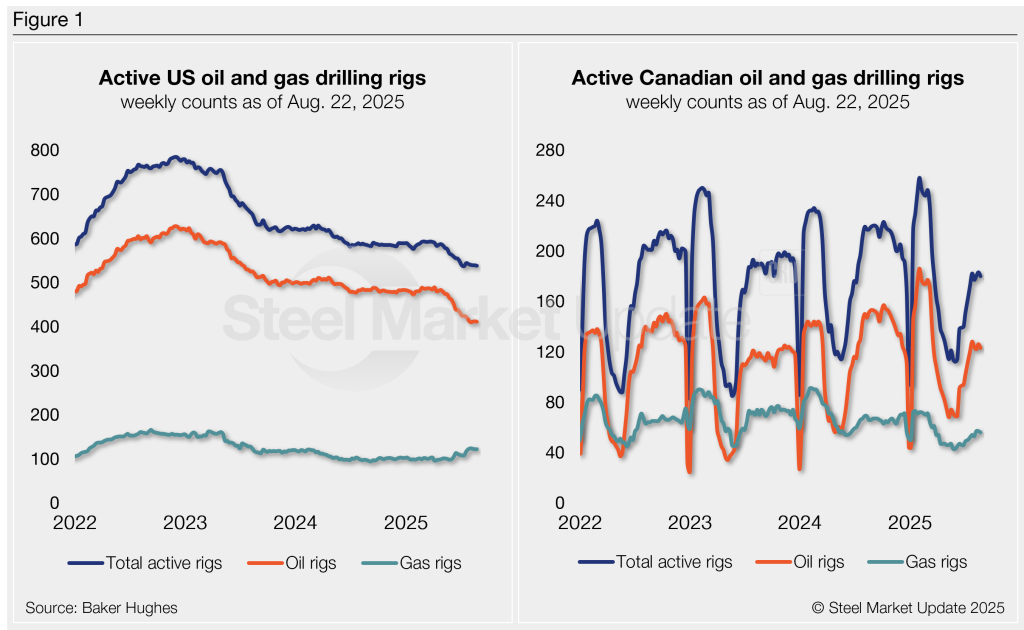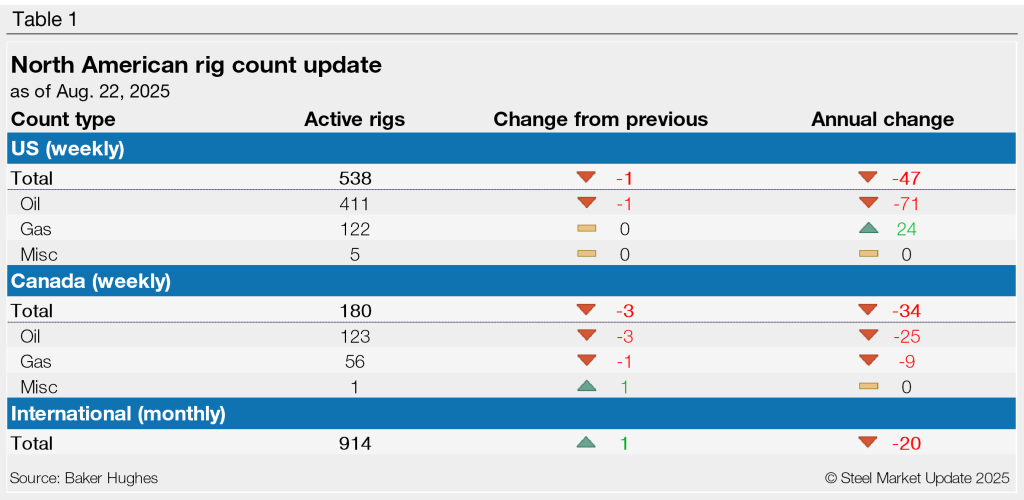Canada

August 22, 2025
Active rig count declines in US, Canada
Written by David Schollaert
Oil and gas drilling activity slowed in the US and Canada this past week. This is an unfamiliar trend after both regions have seen repeated gains of late.
The weekly count of active rotary rigs in the US, as reported by oilfield services provider Baker Hughes, was down by one at 538 as of Friday, Aug. 22. Active oil rigs decreased by one, while gas rigs were unchanged at 122. Miscellaneous rigs were also flat at five total week on week (w/w).
In Canada, the active rig count declined by three from the previous week to 180. Gas drilling activity was down one w/w at 56, while miscellaneous drilling increased by one rig to one.

The international rig count is reported monthly at the beginning of each month. The July count was 914 rigs, up one from June but down 20 from July last year.

The Baker Hughes rig count is significant for the steel industry because it is a leading indicator of oil country tubular goods (OCTG) demand, a key end market for steel sheet.
For a history of the US and Canadian rig counts, visit the rig count page on our website.






